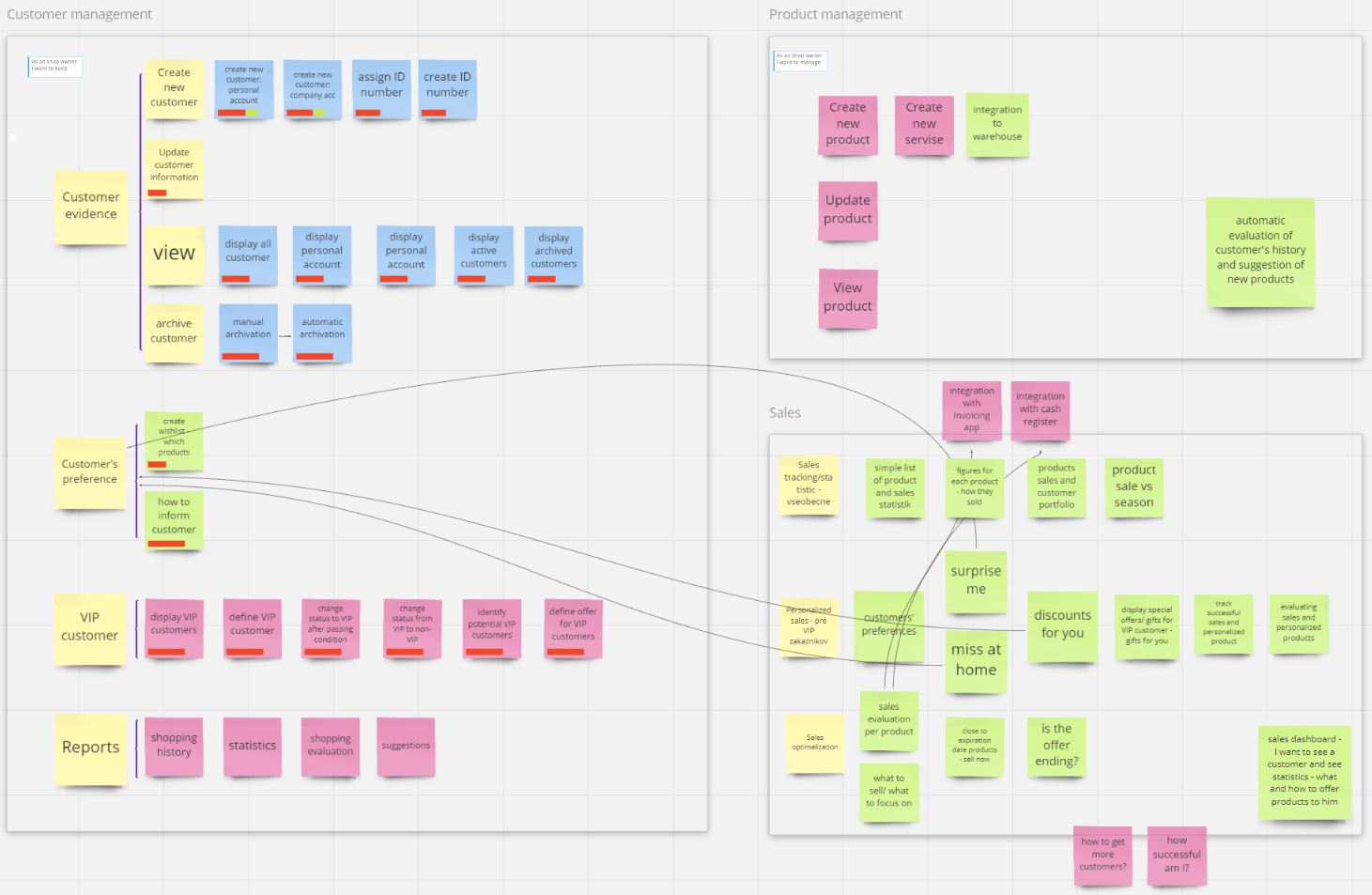Online meetings are the new reality of our everyday lives. Most of us have already been to an online meeting with a difficult agenda or maybe you’re just planning one. But achieving demanding goals in the online world is not easy. Working from home means more distractions when you’re already trying to concentrate on 10 people talking on your screen.
How can you organize a difficult online meeting and make it easier for people to concentrate on work and reach a conclusion without wasting time and energy?
Why is it more difficult online?
It’s very hard to keep attention. No post-its to write on, no board in front of you and so many constant distractions on the computer screen.
How to do backlog refinement online?
Recently we did a backlog refinement session online in which the team built the backlog and worked on new epics. Since everyone needed a common starting point, the whole team attended the meeting (not just the Product Owner, Scrum Master, and architect as usual). To simplify the meeting, we organized it in three parts:
Phase 1: Setting a goal
Goal: Create a common starting point for the team and explain the goal of the session.
Time: usually 30 minutes, if you’re preparing the backlog for a longer time period, you might need an hour.
First, the Scrum Master presents the agenda. The product Owner then explains what goals should be reflected in the backlog. If the team is experienced, leave the epic creation to them, if not, the Product Owners need to have epics ready for the team before the backlog refinement.
Phase 2: Splitting requirements
Goal: Splitting requirements into epics or features with acceptance criteria.
Time: at least one hour.
In the second phase, the team splits into smaller groups, micro teams, dedicated to certain epics (breakout sessions). This way you can easily eliminate distractions created by bigger groups of people. Micro teams should be able to reach consensus much faster and keep their concentration easier.
Very often people get stuck in the second phase. There’s a lot of different topics to work through and that creates chaos in bigger groups of people.
It’s very important to remember the scope of your work and not waste your time going into unnecessary details. This way the meeting shouldn’t take longer than expected and if you need to work on something in more detail, you can schedule a call for later.
The product owner and Scrum Master should be available and ready to answer the team‘s questions at all times during this phase. The best way to do this is to create a channel in your chat application (Slack, Teams,…) where they can interact with micro teams and join their conference call if they need to. Product Owner should also accept the results of each micro team so he/she has a good overview before the final, closing phase.
Phase 3: Summarizing the results
Goal: Presenting results from the backlog refinement session.
Time: approximately 30 minutes
In the last part of the meeting, people join one conference call again and each micro team presents their ideas, talks about the requirements they worked on and says what is needed to complete them. Don’t forget about one rule that will make your life easier on site too:
If a group already worked on something, don’t add new ideas while they’re presenting results of their work.
At most say what might create a problem, if you experienced something similar.
The goal is not to go into too much detail, it’s the opposite. You should summarize the results of the previous phase.
Scrum Master’s preparation
When we mentor a team, we always have a separate meeting with the Scrum Master before the session. Scrum Master’s situation is more complicated in the online world, because he/she needs to schedule multiple meetings, especially for the second phase. Remember these points when you’re preparing backlog refinement online:
- Plan a meeting for the begging and end of the session for the whole team.
- Plan multiple parallel meetings for the second phase. Divide the team into groups, microteams of 3 – 4 people.
- Explain the agenda, goal, and organization of the meeting in the invitation. Don’t forget to let everyone know where the backlog can be found.
- Don’t forget to plan short breaks to give people a chance to take a breath.
Product Owner’s preparation
We have a similar preparation meeting with the Product Owner since he/she needs a clear vision and goals for the product before the backlog refinement. Depending on the maturity of the team, he/she should have epics ready for the team before the refinement session.
We highly recommend that the Scrum Master should attend this preparation session too. It prepares him/her to answer any questions of the team during the second phase.
Tips for a successful online backlog refinement workshop
Online effectively
Difficult meetings like backlog refinement can be done online and successfully, but they require some change. Organize your meeting in three phases and pay more attention to keeping the team interested and concentration.
Less people working together allows everyone to concentrate and communicate more easily. In the end, splitting into smaller groups makes you more effective and the online session less painful.
Think outside the box and try to use this way of organization in other demanding meetings too. Just be agile and adapt how you need! 😊

